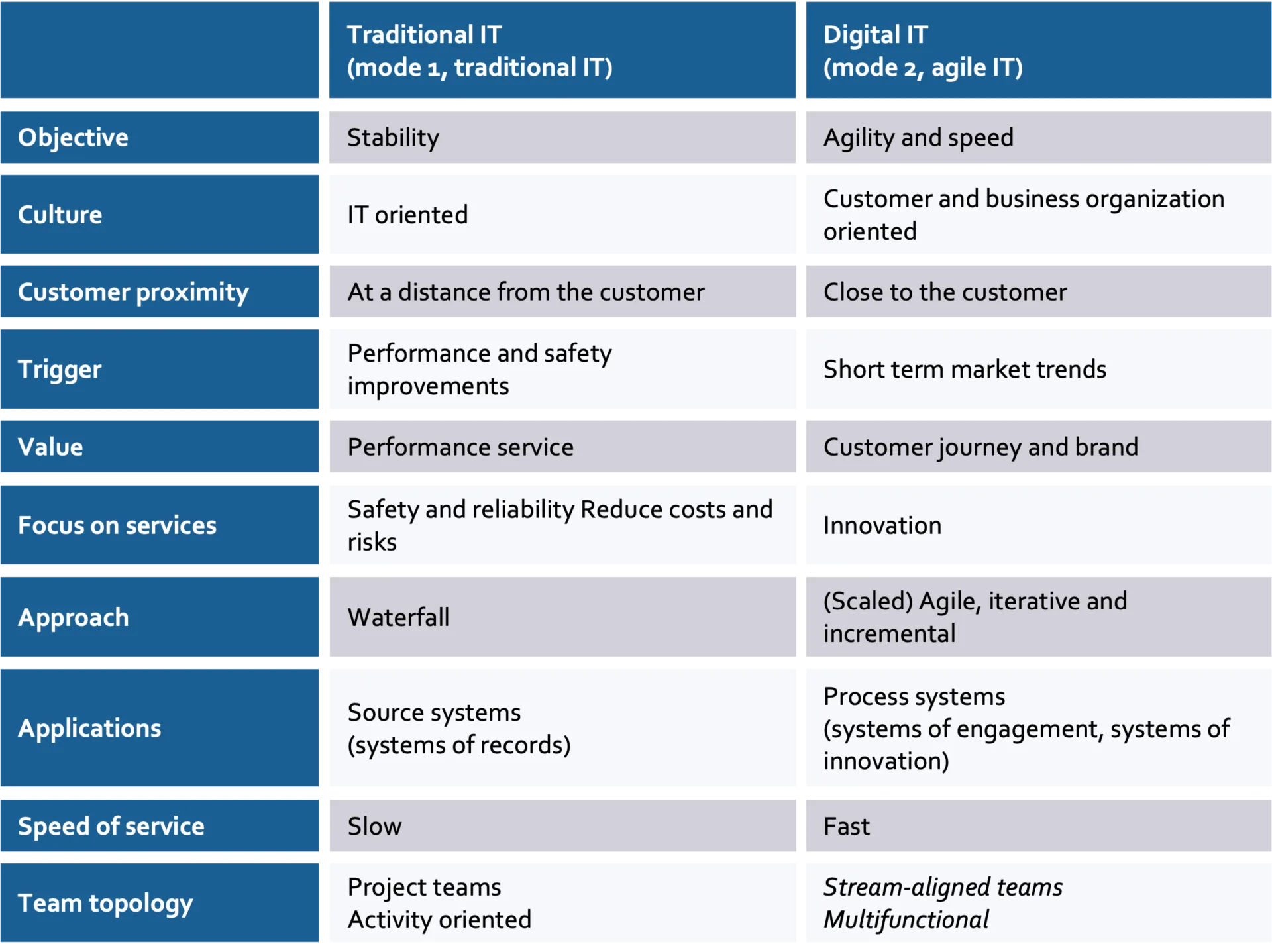Shifting gears in IT transformation
Digital transformations are complex and affect large parts of your organization. But how can you make optimal use of the IT function? There are several gears in which you can operate an IT function. Do you use standard IT first-gear for all projects and developments, or do you dare to switch gears when possible?

Multiple IT gears
Many organizations struggle with the impact of digital transformation. On the one hand they are responsible for providing the existing products and services while on the other hand, they have to adapt and reinvent themselves using modern IT capabilities.
For example, the delivery of existing products and services requires a traditional form of IT. Here the focus is on predictability/continuity, scalability, risk avoidance and cost optimization. This is reflected in a culture of reliable management techniques, systematic working methods and change management processes. The operation of this form of IT is based on a backend system of records, such as ERP and CRM systems, which ensure stability and compliance.
In contrast to this traditional form of IT, modern IT focuses on agility, speed and innovation. This is an important condition for organizations to quickly adapt to changing market conditions and to be able to reinvent and transform themselves. Creating business value is a top priority here. This is reflected in a culture of experimentation, innovation, agility and accepting that sometimes things do not work out. The operation of this form of IT is based on systems of engagement, such as an e-commerce or banking app. These systems are closer to the customer and must be continuously improved with new functionality and/or a better user experience.
The coexistence of these two forms of IT within one organization is called bimodal IT or two-speed IT [1]. The first gear gives substance to traditional IT, the second gear gives substance to digital IT. The following table describes the main features of both gears.

Shifting gears
This raises the question: how can the organization optimally use these IT accelerations for digital transformation? There are several organizational forms for this [2]. Firstly, the organization can determine for each project which acceleration is best: an agile approach or a waterfall approach. Second, the organization can divide its existing IT function into two teams. One team will work according to agile principles and the other team will work according to a traditional approach. Third, in addition to its existing IT function, the organization can set up a new digital division that will work entirely according to agile principles. Fourth, organizations that already work according to the bimodal concept can choose to integrate both modes back into a unimodal IT function. The organization hereby outsources its operational tasks of traditional backend systems to partners. This creates space and allows the IT function to fully focus on the digital transformation.
What can you, as responsible for IT, do with this insight?
It is important to realize that a one size fits all or blueprint approach for digital transformation does not exist. Which organizational form is required for your organization depends on the ambition and objective of your digital transformation, the type of products and services your organization provides and the desired agility. When your organization starts developing fundamentally new digital products or services, consider setting up a digital division in addition to the existing IT function. In all other cases, the existing IT function has sufficient room to vary between a traditional approach or a more agile approach. In other words, consciously choose an organizational form that optimally supports the digital transformation of your organization and dare to switch with IT gears!
References:
[1]Bimodal IT: Business-IT Alignment in the Age of Digital Transformation. Bettina Horlach1, Paul Drews, and Ingrid Schirmer https://www.vka.nl/publicaties...
[2] Options for Transforming the IT Function Using Bimodal IT
Haffke, I., Kalgovas, B., & Benlian, A., MIS Quarterly Executive, June 2017 https://www.vka.nl/publicaties...
Related insights
